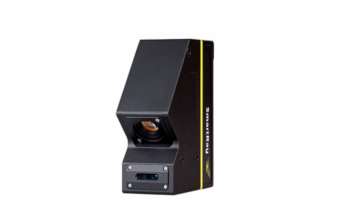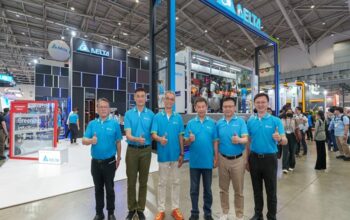- The collaboration focuses on real-time digital video, artificial intelligence (AI), and edge-to-cloud technologies across a private 5G wireless network
- The successful collaboration demonstrates the potential for advanced technological solutions that can improve operational efficiency, product quality, and supply chain optimization
- Private 5G networks will play a critical role in enabling automated smart manufacturing
Three of the biggest names in global technology have joined forces to highlight the ability of already-available 5G, artificial intelligence (AI), and automation solutions to transform manufacturing and improve productivity, efficiency, environmental impact, and safety while reducing costs.
Ericsson (NASDAQ: ERIC), Amazon Web Services (AWS), and Hitachi America R&D enabled the private 5G infrastructure trial at Hitachi Astemo Americas’ electric motor vehicle manufacturing plant in Berea, Kentucky, USA.
“The best news about this collaboration is that it is not about capabilities that will be available at some distant point in the future,” Thomas Noren, Head of PCN Commercial and Operations, Ericsson, says. “These solutions can be deployed today in manufacturing and enterprise environments to deliver a range of early adopter competitive advantages. As global technology leaders, Ericsson AWS and Hitachi America R&D have shown how collaboration can drive innovation.”
THE SOLUTION
The solution leverages Ericsson Private 5G side by side with the AWS Snow Family to provide the private cellular networks that were foundational in establishing machine learning (ML) models within the Hitachi manufacturing complex.
Using Hitachi video analytics, real-time video of the component assembly operation was fed across the Ericsson private 5G network to help detect defects earlier, reducing wasted material and lost production.
The goal was to build, train, and apply these models to enhance product quality on the manufacturing floor, marking a significant step in the application of multiple technology components in industry.
Built on Ericsson’s 4G and 5G radio and dual mode core technology, Ericsson Private 5G enables a wide variety of innovative use cases for both indoor and outdoor environments while easily integrating with business operations, devices, and applications ensuring next-level efficiencies in productivity, cost, and energy use.
Ericsson Private 5G is Ericsson’s next-generation private network solution providing secure and reliable 4G and 5G connectivity through its single server dual mode core. Built for business operations, the product comes pre-integrated to ensure rapid time to service, delivering advanced and intelligent operations in any environment, all while keeping sensitive data secured on-site. Ericsson Private 5G is able to support and adapt to a variety of use cases, industries, and levels of complexity for enterprises.
“We explored and validated new use cases enabled by private 5G to show how smart factories can already function,” Sudhanshu Gaur, Vice President of R&D for Hitachi America and Chief Architect at Hitachi Astemo Americas, says. “The combination of private 5G, cloud, and artificial intelligence/machine learning automated technologies has the potential to revolutionize the way we manufacture products, and we are excited to be at the forefront of this innovation.”
KEY TAKEAWAYS
The results of the deployment suggest broad operational and business impacts, from improving product quality to lowering costs to optimizing the entire supply chain ecosystem. Key outcomes include:
- Rapid use case implementation via Ericsson Private 5G: The team set up cameras on a live production assembly line that produces motor components for electric vehicles. Real-time video of the component assembly operation was fed across the Ericsson private 5G network to an AWS Snowball Edge device running Hitachi video analytics. By using 5G wireless, the trial installation was completed in three days.
- Higher performance and reliability for quality inspections: For one use case – Defect Detection – the trial demonstrated that computer vision running on a private 5G network could simultaneously inspect 24 assembly components compared with one-by-one inspection using conventional approaches. Using high-definition 4K cameras, the computer vision configuration was able to observe defects at the sub-millimeter level – far greater visibility than would be possible with the human eye. The high throughput and low latency of 5G was key to uploading huge volumes of video data from the cameras to the AWS Snow Family device for analysis, which helped streamline decision-making.
- The enablement of global scalability with 5G and cloud: The trial demonstrated that the combination of 5G and cloud technologies is now making full-scale, global deployment of digital production line applications viable – from defect detection and quality inspection to robotics automation, real-time machine control, augmented reality and more.
Chris McKenna, Global Lead, of Private Wireless at AWS, says: “While it’s long been anticipated that technologies such as 5G and video analytics could drive innovation in manufacturing, one of the challenges has been how to securely and reliably process that data to drive outcomes. By using the Ericsson Private 5G Network product, and running artificial intelligence and machine learning models on an AWS Snow Family device, we were able to demonstrate a reliable and secure connection to run machine vision inferences at the site to help detect defects earlier.”
Click on the following link Metrologically Speaking to read more such news about the Metrology Industry.









